Emerald
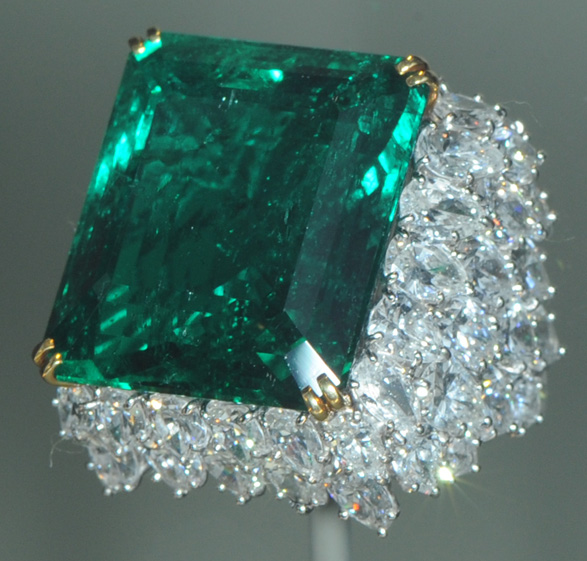 | This is the Chalk Emerald, a 37.8 carat emerald from Colombia. Colombia is the major source of emeralds. It is nestled in a cluster of 60 pear-shaped diamonds weighing a total of 15 carats. Emerald is a variety of the mineral beryl, which is a silicate of beryllium and aluminum (a cyclosilicate) with the chemical composition Be3Al2(SiO3)6. These specimens are displayed in the Smithsonian Museum of Natural History. |
This is the Mackay Emerald and Diamond Necklace. This huge emerald is set in an art deco diamond and platinum pendant. In 1931, Clarence Mackay gave the necklace as a wedding gift to his wife, Anna Case - a prima donna at the New York Metropolitan Opera from 1909 to 1920. |
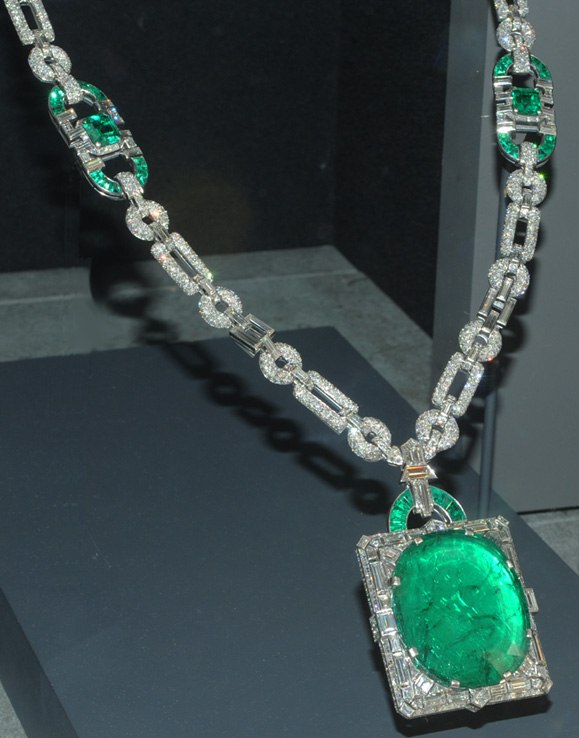 |
 | This is the Hooker Emerald Brooch, containing a 75.47 carat emerald from Colombia. |
Indian Emerald Necklace, ColombiaThis art deco, Indian-style necklace features 24 emerald drops of graduated sizes, each adjoined by a smaller emerald bead. All are set in platinum with hundreds of small diamonds. | 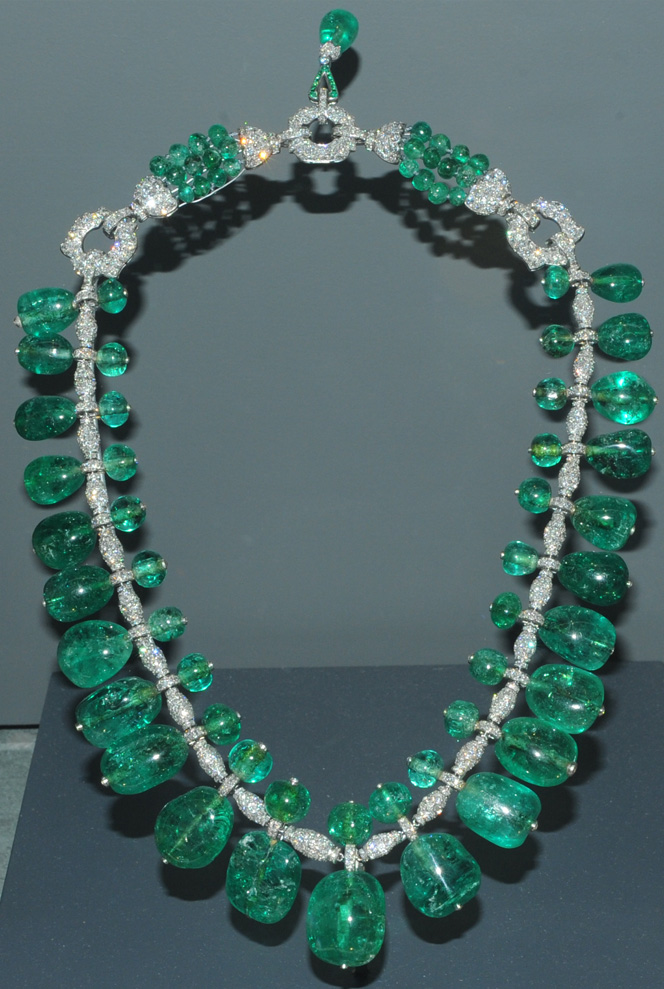 |
This is the Inquisition Necklace. It is displayed in the Smithsonian Museum of Natural History. 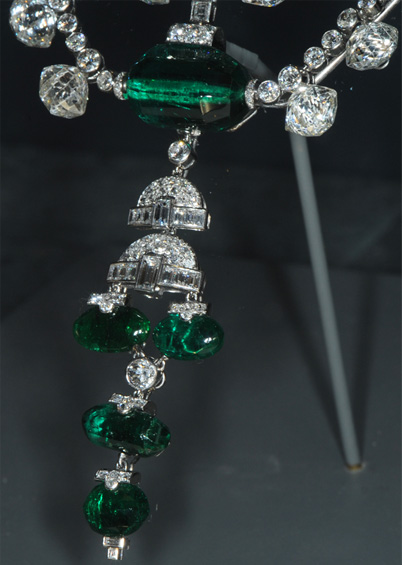 The Inquisition Necklace contains 15 Colombian emeralds and 336 diamonds. The center emerald is 45 carats. Many of the gemstones in this necklace date back to the 17th century, when Spanish conquistadors shipped large quantities of emeralds from South America to Europe and Asia. Despite its name, the necklace has no known association with the infamous Spanish inquisition. The large diamond and emerald gems were probably cut in India in the 1600s. Stringing the gems was an extremely delicate procedure that entailed drilling small holes in the large emeralds and the 16 largest diamonds. Legend has it that the necklace was owned first by Spanish royalty. The Maharajah of Indore acquired it in the early 20th century. |
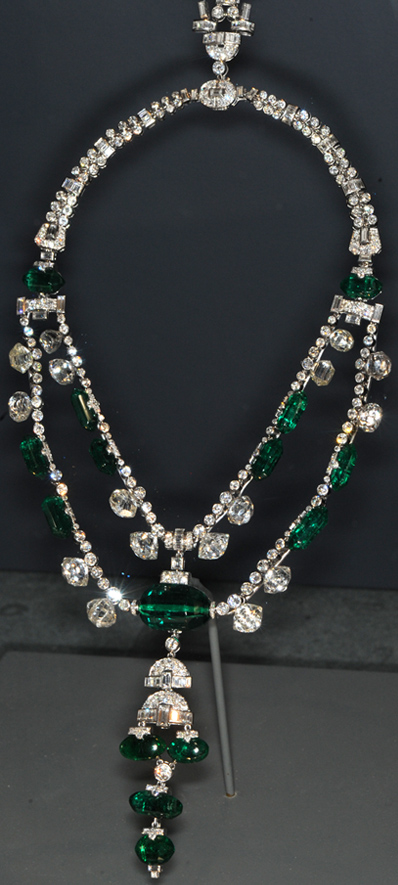 |
Maximilian Emerald Ring This emerald was once set in a ring worn by Mexico's ill-fated emperor, Ferdinand Maximilian Joseph. An Austrian archduke crowned emperor of Mexico in 1864, he was executed just three years later. |
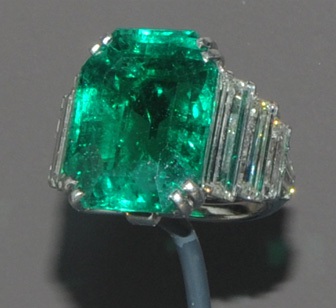 |
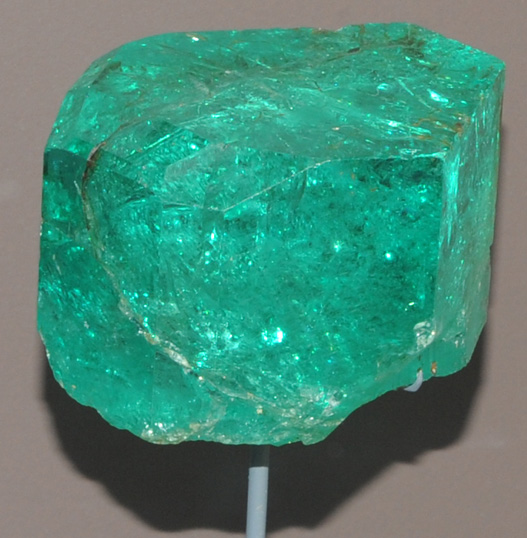 | This is the Gachala Emerald from Vega de San Juan mine, Colombia. This uncut crystal weighs 858 carats - huge for an emerald. It is named after the mining district where it was found in 1967. Emerald has the chemical composition Be3Al2(SiO3)6 and is classified as a cyclosilicate. It has a hexagonal crystal system 6/m2/m2/m. Its density is 2.67-2.78 and it has an index of refraction in the range 1.566 to 1.602. It's hardness is 7.5 to 8 and its streak color is white. Some of the world's most famous emerald deposits are in Colombia around hydrothermal sites where they crystalize along fractures in carbonate rocks associated with hot springs. Emerald is a variety of the mineral beryl which is colored green by the inclusion of small amounts of chromium or vanadium. A green variety of beryl which shows a six-spoked growth pattern is trapiche , or trapiche emerald. |

These three samples of emerald are from Hiddenite mine, Stony Point, North Carolina. To give an idea of the size of the samples, the center one scales to about 4x7 cm.
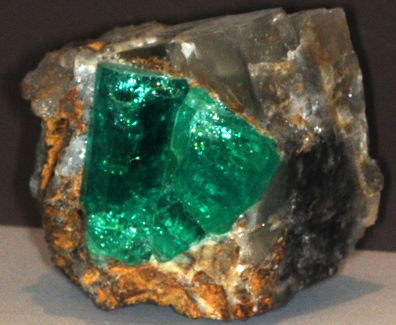 | The sample at left is emerald with calcite. It is about 5x5 cm and is from Muzo mine, Muzo, Colombia.  This emerald sample is about 7x18 cm and is from Emerald mines, Tokovaya River, Malyshevo, Russia. |
The sample near right is about 1.5 x 4 cm and is from Brumado, Minas Gerais, Brazil. The sample far right is about 9x13 cm and is from Campo Formosa, Caraiba, Brazil. They are shown at the same scale. |  |
Mindat: Emerald
| Minerals |
| HyperPhysics*****Geophysics | R Nave |